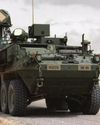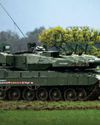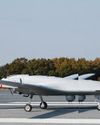
In early January 1942, the United States of America initiated Project X-Ray, a unique endeavour aimed at utilizing the Mexican Bat, a species found in the southwestern region of the country, as a retaliatory weapon in response to the attack on Pearl Harbour by the Japanese. The strategy involved attaching incendiary bombs onto the bodies of bats and releasing them from cluster containers which were specially produced to open only at an altitude of 1,000 feet or more.
Once released, these armed bats would seek shelter in buildings predominantly constructed from flammable materials such as wood. The incendiaries would detonate upon roosting, resulting in widespread fires.
Although the project was eventually abandoned due to the ongoing development of the Atomic Bomb, Project X-Ray serves as an exceptional illustration of efforts to employ cost-effective, lethal and autonomous weapons in modern warfare.
In November 2017, the Future of Life Institute, a US-based non-profit organization, released a YouTube video highlighting the existential risks associated with 'Slaughterbots' miniature autonomous drones equipped with Artificial Intelligence (AI) capabilities to carry out targeted antipersonnel strikes. The video emphasised the alarming potential of these lethal machines, surpassing the destructive power of nuclear weapons and predicted their utilization by both state and nonstate actors to achieve national, political, or ideological objectives through mass extermination. This portrayal shed light on the urgency of addressing the development and deployment of autonomous weapons.
Denne historien er fra June 2023-utgaven av Geopolitics.
Start din 7-dagers gratis prøveperiode på Magzter GOLD for å få tilgang til tusenvis av utvalgte premiumhistorier og 9000+ magasiner og aviser.
Allerede abonnent ? Logg på
Denne historien er fra June 2023-utgaven av Geopolitics.
Start din 7-dagers gratis prøveperiode på Magzter GOLD for å få tilgang til tusenvis av utvalgte premiumhistorier og 9000+ magasiner og aviser.
Allerede abonnent? Logg på

THE RISE OF UGVs REVOLUTIONISING TACTICAL AND STRATEGIC MILITARY OPERATIONS
MANOJ K CHANNAN explains the history of UGVs, their role in modern warfare, their integration with advanced technologies, and their broader implications for military operations, intelligence assessments, and human-machine collaboration

INNOVATIONS AND ADVANCEMENTS IN DEFENCE TECHNOLOGY BY MKU
The defence industry is evolving rapidly to address the dynamic challenges of modern warfare, and MKU is at the forefront of this transformation. In an exclusive interaction, VAIBHAV GUPTA, Director India Business of MKU highlights their innovative approaches, spanning advanced ballistic protection, cutting-edge night vision and thermal imaging technologies, and strategic partnerships to enhance India's defence capabilities. From pioneering protective solutions for soldiers to leveraging indigenous technological breakthroughs, MKU continues to redefine the benchmarks of excellence in defence technology.

INDIA'S STRYKER CHOICE
India's selection of the US-made Stryker armored vehicle over the indigenous WhAP sparks debates on prioritiSing swift acquisitions and combat readiness versus commitment to self-

HANWHA AEROSPACE DEEPENS INDIA DEFENSE TIES AMID REGIONAL TECH RACE
Amid growing regional competition in defence technology, a prominent defence initiative is strengthening ties with India through successful artillery and air defence programs. This collaboration aligns with India's strategic focus on bolstering domestic defence manufacturing and reducing reliance on imports. By fostering advanced technology transfer and enhancing local production capabilities, the partnership is poised to transform the defence landscape in Asia, showcasing significant achievements in artillery systems, air defence solutions, and aerospace innovation

ADVANCING INDIA'S DEFENCE CAPABILITIES
Larsen & Toubro (L&T) is advancing India’s defence ecosystem with ground breaking innovations, including next-generation combat platforms, autonomous technologies, and cutting-edge systems, underscoring its commitment to India’s military modernisation, highlights ARUN RAMCHANDANI, SVP & Head – L&T Precision Engineering and Systems IC

NEED FOR A LARGER ARTILLERY FORCE
At a time when India is increasingly facing a multi-front challenge on her borders, it is quite evident that the Indian artillery modernisation programme needs a massive thrust from the government, argues JYOTI SINGH

FORCE PROTECTION
The Indian Army faces an urgent need to equip Main Battle Tanks and Armoured Fighting Vehicles with advanced Active Protection Systems to counter modern threats and enhance battlefield survivability. The lack of such systems could be addressed with the combat-proven Trophy APS, writes ATUL CHANDRA

THE INDIAN ARMY AND DRONES
AMIT GUPTA argues why the induction of Drones, which have changed the face of modern warfare, into the Indian Army needs to be in greater numbers

TECHNOLOGICAL SYNERGY REDEFINED: IAI'S COMMITMENT TO INDIA-ISRAEL INNOVATION
BRIG. GEN. (RES) EYTAN ESHEL, Executive Vice President of Technology, Chief Technology Officer (CTO), R&D and Innovation of IAI, highlights how nearly 40 years of India-Israel collaboration has fostered innovation, leveraging India's deep-tech talent for global aerospace and defence advancements while promoting sustainability and co-developing solutions with Indian startups and institutions.

INDIA EMBARKS ON DECADE-LONG PROJECT TO DEVELOP FUTURE-READY COMBAT VEHICLE
With a substantial portion of its borders shared with neighbouring countries, it is essential for India to have modern and robust tanks for both defensive and offensive operations. In this regard, the FRCV's advanced capabilities allow it to face changing ground obstacles like land and air threats. It will provide a decisive advantage in future conflicts and enhance operational effectiveness through its integration with air power, writes JOSEPH P CHACKO